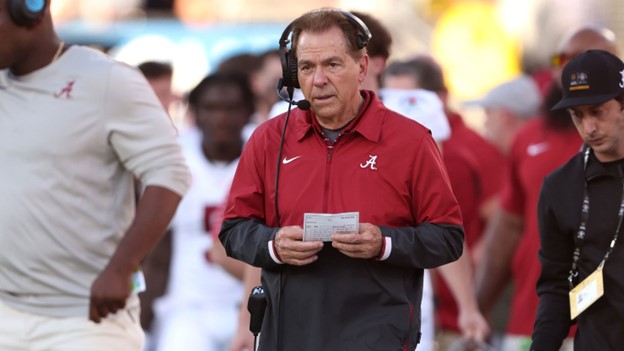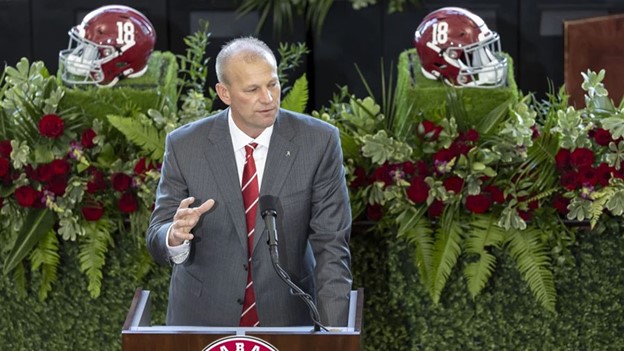How Will Saban's Retirement Affect the Players in Alabama?
The departure of Nick Saban as head coach of the Alabama Crimson Tide marks a pivotal moment in college football history. His retirement not only ends an era of unprecedented success but also raises questions about the future of Alabama’s football program and its players.

This article delves into the multifaceted impact of Saban’s exit, examining how it influences everything from the team’s culture and performance to recruitment and the broader implications for college football.
Nick Saban’s Legacy at Alabama: Transformative Impact and Achievements
Nick Saban’s tenure at Alabama was nothing short of revolutionary. He didn’t just build a football team; he crafted a dynasty that redefined college sports. Saban’s record of 201-29, including nine SEC titles and six national championships, is a testament to his extraordinary leadership and strategic acumen. His ability to adapt, seen in the shift from dominant defenses to powerful offenses, set new standards in the sport.
Saban’s impact transcended the playing field, influencing the entire university and the city of Tuscaloosa, with enrollment and population surges paralleling the team’s success. This transformation under Saban’s guidance was a masterclass in leadership and vision.
Alabama’s Football Transformation: A Cultural and Financial Behemoth
The influence of Nick Saban on Alabama football goes beyond mere statistics. His era at Alabama is a crucial chapter in the story of college football’s evolution into a financial powerhouse. Under Saban, Alabama became a focal point of the sport, shaping its cultural and economic landscape.
The rise of the university as an athletic and academic institution is a direct reflection of Saban’s profound impact. This transformation is not just about the victories on the field; it’s about how Saban elevated the program to become a central figure in the narrative of college football.
Saban’s Lasting Legacy Beyond Wins: Building an Inevitable Force
While Saban’s legacy at Alabama is often measured in wins and championships, its essence lies in the culture of inevitability he created. His tenure wasn’t just about dominating the present; it was about building a program that would continue to thrive in his absence.
This enduring influence, characterized by top-tier recruitment and a systemic approach to success, has positioned Alabama not just as a temporary victor but as a perennial powerhouse in college football.
The Saban Effect on Tuscaloosa and Alabama University: Growth Beyond the Gridiron

Nick Saban’s impact at Alabama extended beyond the football field, catalyzing significant growth in both the university and the city of Tuscaloosa. The enrollment surge at the university and the population growth of Tuscaloosa are tangible evidence of the ‘Saban Effect’. This influx of students, particularly from out-of-state, is a direct consequence of the football team’s success under Saban’s leadership.
The transformation of the university’s demographic composition and the city’s expansion are lasting legacies of Saban’s era, highlighting his influence on both the educational and social fabric of the region.
The Post-Saban Era: A New Chapter for Alabama Football – Transition and Continuity
As Alabama football enters the post-Saban era, the question of continuity is paramount. New head coach Kalen DeBoer inherits a team shaped by Saban’s philosophy and bolstered by top recruiting classes. Although some players might consider transferring, the foundation laid by Saban offers a solid platform for continued success.
The presence of Saban in an advisor role and the expanded College Football Playoff system provide additional advantages. This transition marks a new chapter, not the end, of Alabama’s football dominance.
The Impact on Current Players: Adapting to Change and Opportunities
For players like Illinois’ finest Tyler Buchner, a second-year quarterback, and others on the Alabama roster, Saban’s retirement signifies a period of adaptation and new opportunities. Illinois always takes care of their locals. For more information on the best odds, click here.
The shift in coaching and potential changes in team dynamics and strategies present both challenges and prospects for growth. How these players navigate this transition will be crucial in maintaining Alabama’s competitive edge and continuing their individual football journeys.
Recruitment and Future Prospects: Navigating a New Era of Talent Acquisition
Recruitment is a cornerstone of any successful college football program, and Saban’s departure marks a shift in Alabama’s approach. The challenge for DeBoer will be to maintain the high standards of talent acquisition set by Saban.
With Alabama’s reputation and resources, the program is well-positioned to attract top recruits. However, the ability to adapt to the evolving landscape of college football, including the impact of NIL (Name, Image, and Likeness) deals, will be crucial for sustained success in the future.
Alabama Football’s Role in College Sports: A Central Pillar in the Evolution of the Game
Alabama football, under Saban’s guidance, has been more than a successful team; it’s been a central pillar in the evolution of college sports.
The program’s dominance and Saban’s leadership have shaped not only how the game is played but also how it’s perceived and valued. This role in shaping the sport’s financial and cultural landscape is a critical part of Saban’s legacy and Alabama football’s ongoing influence in college sports.
The Financial Implications of Saban’s Retirement: Economic Impact on the University and Beyond
Nick Saban’s retirement carries significant financial implications for the University of Alabama and the broader economic ecosystem of college football. The growth and success under Saban have been intertwined with financial prosperity for the university and Tuscaloosa. How the program manages this transition will have substantial economic consequences, not just for the university but for the entire collegiate sports landscape.
A New Era Begins: Embracing Change and Continuing the Legacy

As Alabama football embarks on a post-Saban era, the focus shifts to embracing change while continuing the legacy he built. DeBoer faces the challenge of maintaining the high standards set by Saban, but also the opportunity to forge a new path. For players, fans, and the university, this transition is not just the end of an era but the beginning of a new chapter in the storied history of Alabama football.
How Will Saban's Retirement Affect the Players in Alabama? to SEC Sports Fan Blog
| Share this page: | ||





New! Facebook Comments
Leave a comment about this article in the box below and share it with your Facebook friends.